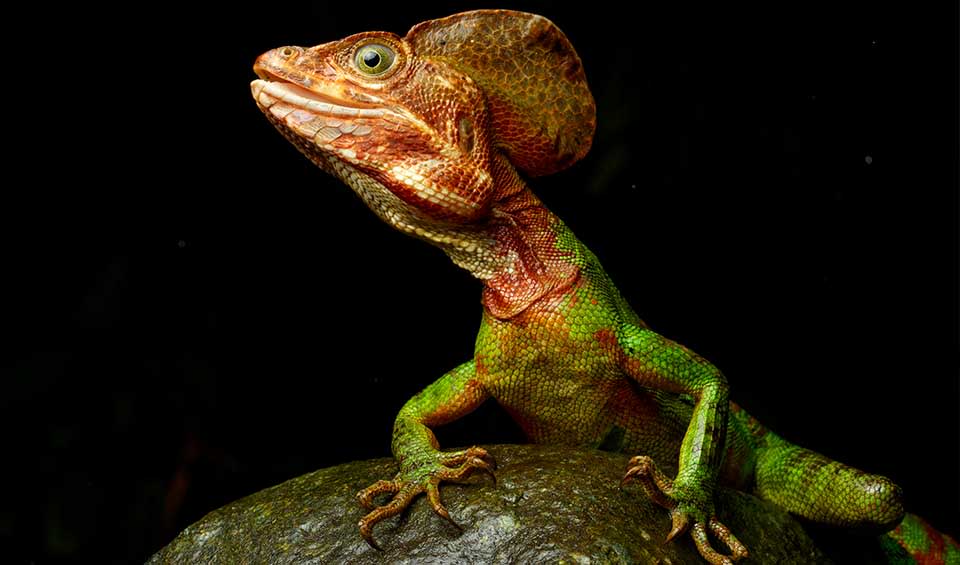A fascinating and flashy-looking lizard native to Central and South America, particularly in countries like Colombia, Panama, and parts of Ecuador. It’s one of several species known as “basilisk lizards,” famous for their incredible ability to run across the surface of water, earning them the nickname “Jesus Christ lizard.” While that trait is more famously associated with the common basilisk (Basiliscus basiliscus), the western basilisk is no slouch when it comes to speed, agility, and tropical charm.
This species is smaller and a bit less well-known than its more famous cousin, but it shares many of the same physical traits. Their bodies are slender and agile, covered in green or olive scales with lighter markings or speckled patterns that help them blend into their forest surroundings. Males are especially eye-catching thanks to the crest-like fin on the back of their head—a raised ridge that gives them a slightly dragon-like look and helps them stand out during territorial displays or courtship.
One of the basilisk’s most impressive features is its ability to run bipedally, meaning it can rise onto its hind legs and dash upright across land—or even across water. This water-running ability is thanks to their wide, fringed toes, which slap against the surface fast enough to keep them from sinking—at least for a few meters. It’s a clever way to escape predators, especially in the dense, watery environments of tropical forests, where quick dashes across streams or rivers can mean the difference between life and death.
Western basilisks are omnivorous, feeding on a wide variety of food including insects, spiders, small lizards, fruits, and plant matter. They’re active during the day and often seen basking on low branches or rocks near water, always alert and ready to bolt if danger approaches. When threatened, they’ll often leap into a river or stream—either swimming or sprinting across the surface.
Distribution
 Colombia
Colombia Ecuador
Ecuador Panama
PanamaAnything we've missed?
Help us improve this page by suggesting edits. Glory never dies!
Suggest an editGet to know me
Terrestrial / Aquatic
Altricial / Precocial
Polygamous / Monogamous
Dimorphic (size) / Monomorphic
Active: Diurnal / Nocturnal
Social behavior: Solitary / Pack / Herd
Diet: Carnivore / Herbivore / Omnivore / Piscivorous / Insectivore
Migratory: Yes / No
Domesticated: Yes / No
Dangerous: Yes / No




